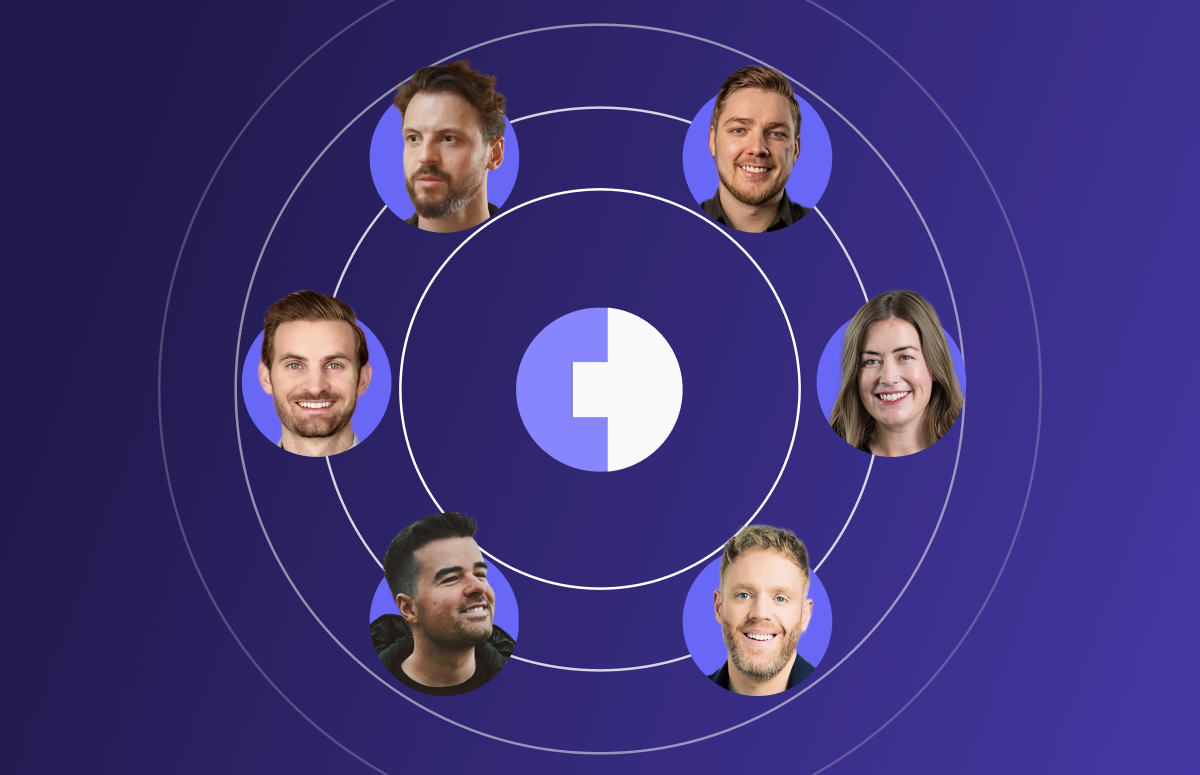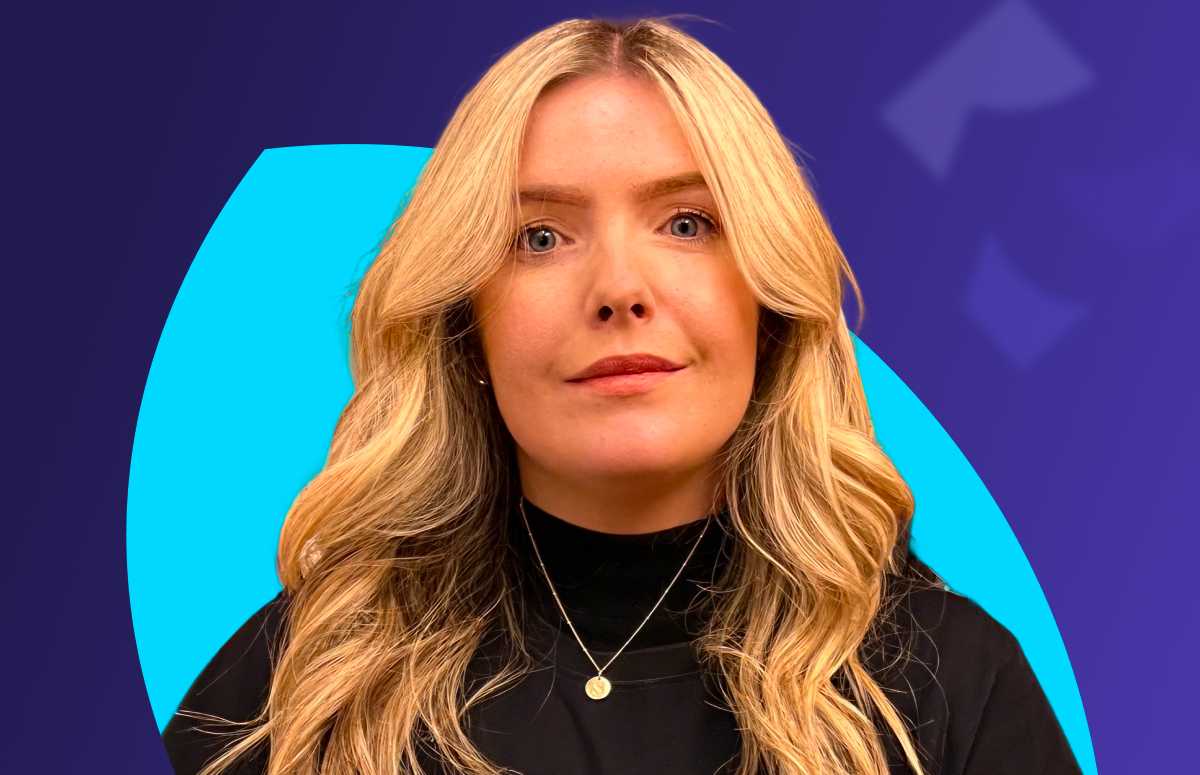How to Make Your Business Stand Out: 7 Steps for Marketers
7 steps for making your brand stand out:
Crowded category. Feature parity. Competitors cloning each other’s look. It’s a maze to know how to stand out in a sea of sameness.
As Sarah Breathnach, VP of Marketing at Hunters, put it:
“The dilemma is how to stand out - not for the sake of standing out, but in a way that actually resonates with your buyer.”
In markets where the “new” gets copied overnight and stunts fade by Monday, attention alone isn’t an advantage.
What wins is meaning: a stance buyers can recognise, repeat, and rally behind. Building a belief-led brand and a clear narrative that syncs your product story, your creative, and your go-to-market - so your ideal buyers recognise you, trust you, and recall you when it counts.
That narrative should convey what you stand for and how your solution delivers an outcome that buyers actually care about. When those pieces line up, every channel - ads, website, sales, events - starts compounding instead of competing.
Below is a practical playbook you can run in any category. It turns “sea of sameness” into a sharp point of view, then operationalises it across messaging, design, content, and measurement - so standing out isn’t a moment, it’s your operating system.
Listen to Sarah’s full podcast episode on this subject here!
1. Diagnose the sameness (before you try to escape it)
Before you can stand out, you need to understand the box you’re in - the category norms, claims, visuals, and trade-offs your buyer already expects. If you don’t define that box, any “new” positioning you create is at risk of falling back into old habits.
Buyers don’t compare you in a vacuum; they scan a wall of look-alike logos all promising the same benefits - faster, easier, unified, AI-powered, trusted.
If you haven’t mapped that sameness, you may end up repeating it too: new colour, same message, which will only result in low recall that forces every sales conversation to start from zero.
Sarah said:
“When I started in cybersecurity, everything was dark and moody - the classic ‘if you don’t use us, you’ll get breached’ vibe. Then Wiz broke through with this bright, optimistic brand, and it worked.”
“But once every startup tried to be Wiz, the category blended back into sameness again - just a lot of copycat companies.”
That’s the danger of skipping this step. Every market has its defaults:
- Language defaults: the same three to five value props everyone repeats.
- Visual defaults: similar colour palettes, gradients, icons, and stock imagery.
- Proof defaults: the same badges, vanity stats, and case-study templates.
- Product defaults: table-stake features dressed up as differentiators.
- Commercial defaults: identical pricing or packaging narratives.
Naming these patterns up front helps you avoid unconsciously copying them later.
Once you can see the box, map the real choices your buyer weighs. Don’t stop at a neat competitor list - capture the actual alternatives: direct options that do what you do, adjacent solutions that solve the job differently, and inertia (“do nothing” or “keep patching”).
For example:
Direct options (do what you do)
- ZoomInfo: “Biggest dataset; safe bet for the board.”
- Apollo: “Cheap all-in-one: data + sequences in one price.”
- Lusha/Seamless: “Lots of emails and mobile numbers fast.”
- Clearbit: “Clean enrichment into our stack.”
Buyers here optimise for perceived scale, convenience, or headline price.
Adjacent options (solve the job differently)
- LinkedIn Sales Navigator: “Titles and org charts straight from the source; warm outreach via InMail.”
- Intent platforms like 6sense/Bombora: “Tell us when to reach out; we’ll source contacts later.”
- Data brokers or one-off lists: “We just need a campaign list now.”
- Enrichment APIs or data lakes: “Pipe raw data into our warehouse and DIY scoring.”
These compete with “precision timing,” “own the pipeline,” or “control in-house,” not just “more contacts.”
Inertia (do nothing / keep patching):
- “AEs research on LinkedIn and build micro-lists.”
- “RevOps will clean CRM later.”
- “Legal is nervous about GDPR, so let’s avoid the phone.”
- “Inbound and partner referrals are good enough.”
Here, the buyer avoids risk, cost, or change management - even if results are slower.
When you lay this grid out, you start seeing the market from the buyer’s seat - their jobs and trade-offs, not vendor categories. That’s when the blur becomes obvious (scale, speed, AI) - and a sharper promise can finally emerge.
As Sarah said:
“To stand out creatively, you need to really, really, really take a different approach.”
2. Pick a sharp, defensible point of view
Features are easy to copy; beliefs are not.
If your story rests on a widget or workflow, a competitor can mirror it next quarter. But if it rests on a conviction about how the world should work, and you organise your product, programs, and proof around that conviction, you become hard to copy and easy to remember.
Sarah summed it up perfectly:
“With features, they’re not really differentiators - at least not long term. Any of your competitors can copy your features overnight.”
That’s why the strongest brands in crowded markets don’t compete on what they do; they compete on what they believe.
Start by writing a single, specific sentence you’re willing to build around - something a little provocative, but clearly useful to your buyer.
Examples:
- “Small teams aren’t a limitation; they’re a design constraint that produces better systems.”
- “B2B doesn’t have a data volume problem; it has a data quality problem.”
That line becomes the spine of your brand. Everything else, such as roadmap priorities, content themes, sales talk tracks, and event formats, should align with it.
Sarah and her team did exactly this at Hunters:
“We’re the solution for small teams. Small teams doesn’t mean small companies; it’s a mindset of building efficiently and scaling with the right technology.”
That belief gave the brand focus. It defined who they built for, shaped their tone at events, and turned a simple phrase into a positioning that sparked conversations.
Lock your own belief in with a tight narrative you can defend.
- Why you exist: Name the shift in the world that’s creating friction for your buyer and the human cost of ignoring it.
- What’s broken today: Call out the myth everyone repeats and why it fails in practice.
- What you believe: State it in one punchy, testable sentence.
- The future you enable: Paint a picture of what success looks like when your belief wins.
Then, make it real through design principles - your non-negotiables across product, messaging, and experience - so the stance guides what you will and won’t do.
If you’re stuck, ask:
- What truth would you print on a billboard, even if your competitors saw it?
- What controversial belief do your customers hold now, thanks to you?
- Can your strongest case study be translated into a single belief sentence?
3. Build a belief-led narrative
A real narrative isn’t about shouting your feature list louder than everyone else, or staging flashy, one-off activations that trend on LinkedIn for 48 hours.
Because attention, on its own, doesn’t build memory or trust. A gimmick might get you a line of people at your booth, but it doesn’t build conviction about who you are or what you stand for.
Sarah said:
“Part of me as a marketer wants to be that brand everyone’s talking about after a big conference - but the reality is, it doesn’t matter if the audience you care about isn’t talking about you for the right reasons.”
That’s the heart of belief-led storytelling. It’s not about being the brand that did the booth with the petting zoo - the kind of stunt people remember for the spectacle, not the substance. It’s about being the company that buyers recall because you understood them.
Belief-led brands don’t chase virality; they build recognition through relevance. They name the tension their buyer actually feels, and then they show up consistently with a clear conviction about how things should work instead.
That’s what earns emotional stickiness.
Sarah’s experience in cybersecurity shows how easy it is to lose that meaning. Referring back to the Wiz example mentioned earlier, Hunters took a different path.
Instead of following suit with the Wiz-copy-cat branding, they focused on purpose: building their story around the idea of small teams making a big impact. They tested it rigorously, tracking how the message performed across ads and conversations until it proved its resonance.
She shared:
“The messaging that won a test on digital, I’m now trying to weave into sales conversations, because it clearly resonates. If it works in ads, it should work in conversations too.”
Here’s how to build a belief-led narrative:
- Start with the why. What frustration, fear, or hope defines your buyer’s world? Write the opening line they’d nod at instantly.
- Name the cost. Spell out what that pain means in human terms - wasted time, lost credibility, burnout.
- Prove the belief. Test it until the message earns its place. If it resonates in content marketing, it should hold up in conversation.
- Show it everywhere. Translate that core belief across ads, sales decks, website copy, events, and PR. The words may change; the stance should not.
The goal isn’t to be the brand everyone’s talking about for a week. It’s to be the one they still trust when they’re ready to buy.
4. Make the brand recognisable (and hard to copy)
The aim is for someone to spot your work in a feed, a sales pitch, or a conference hall and know it’s yours before they even read a word.
That starts with voice. Keep it informal but informed, confident without being too corporate. Write the way your buyers actually speak: short sentences, concrete verbs, and examples drawn from the real world, not marketing metaphors.
Lead with moments they recognise (“late again cleaning up enrichment errors?”) and end on outcomes they care about (higher connect rates, faster cycles, cleaner sales ops).
But recognisability goes beyond words - it’s about the creative system that builds memory. Typography, layout, colour, and imagery should work like anchors, showing up consistently across every touchpoint: in a feed, on a landing page, at an event, even inside your product.
Sarah has seen what happens when that discipline slips. In cybersecurity, where every brand claims to be “innovative,” the sameness becomes overwhelming. Some have tried to break the mould with bold creative, and a few succeeded.
She said:
“One of the companies that did that best was Torque. They took the Liquid Death approach to cybersecurity - skulls, merch that looked like concert gear, even a monster truck at their booth. It worked because it was the first of its kind. But now, everyone’s trying to recreate it - and it’s no longer unique.”
Unfortunately, originality fades fast. Flashy ideas can grab attention once, but only a coherent system builds recognition over time. And keeping that consistency takes work. Sarah pointed out that true differentiation isn’t just creative energy - it’s operational discipline.
“Testing sounds so cool, like you’re a marketing scientist, but it’s actually really boring to follow the process required to test accurately and consistently. It takes structure and rigour.”
The same applies to brand. Standing out once is creative; staying distinct over years is discipline. It’s not about constantly reinventing - it’s about maintaining the visual and verbal patterns that build memory while giving yourself room to stretch within them.
So operationalise it:
- Ship a lightweight brand kit with say this / not that examples, visual tokens, templates, and motion rules.
- You could appoint someone internally to be the final approval for visual and vocal assets, signing off to maintain brand consistency.
- Train spokespeople and internal hosts so the tone carries through on stage, in podcasts, and in sales intros.
Campaigns can bend creatively with new themes, seasonal art directions, and fresh metaphors, but the anchors stay fixed.
When the tone and story remain consistent, each activation adds equity to the master brand instead of resetting it.
5. Use emotion to be remembered (B2B ≠ boring)
Decision-makers rationalise with numbers - but, like any other person on Earth, they remember through emotion. If you want recall, design for fast, human impressions that hit before the spreadsheet does.
That means starting with empathy, not features.
Picture the SDR staring at a 2% connect rate and wondering what’s wrong.
The RevOps lead cleaning data late on a Friday, again.
The CMO questioning whether the last campaign actually moved pipeline.
When you begin with a real scenario that your buyer has lived, you’re going to spark something in them. Because you’ve shown you understand their world.
Then, turn that emotion into something useful. Teach them something that makes their Monday easier, such as a checklist that raises connect rates by a few points, a simple rule that halves data cleanup time, or a visual that helps them explain a complex problem to their team.
When content combines empathy with utility, it gets remembered. It’s not just emotionally resonant - it’s actionable. And people always remember the brand that helped them solve something real.
In cybersecurity, Sarah’s seen the full spectrum of emotional marketing - from the fear-based “you’ll get breached” ads of the past to today’s conference stunts.
The difference between hype and heart, she explained, is what happens after the emotion hits:
“You can spend millions trying to shock people, but the real connection comes when your brand makes someone’s job easier, safer, or more rewarding. That’s what people remember.”
Carry that emotional arc across every format:
- In demand ads: Lead with a truth that makes them feel seen (“Stop paying for data your reps don’t trust”), then pay it off with proof.
- On your website: Put the emotional tension up front, then link it to measurable outcomes you own.
- In sales: Script discovery openers around that same tension so prospects nod before you ever show a slide.
- In events: Don’t just entertain — let people experience the relief your approach creates through live diagnostics, teardowns, or clinics.
Two guardrails keep this powerful and credible.
- Be specific. Emotion without specificity reads as theatre. Tie every punch to a real operator problem and a measurable outcome.
- Be respectful. Don’t use fear or condescension as fuel; direct the frustration at broken processes, not the people living through them.
6. Build community, not just an audience
An audience listens. A community participates.
When you build communities, people feel a sense of belonging - and with that, naturally comes a sense of loyalty.
In Sarah’s words:
“I found it really hard to meet other demand gen people in London. So I started a meetup - just a room, some beers, and an open discussion about what’s working and what isn’t. It’s grown to over 80 members, and it’s still the best way to learn - talking to people who live the same challenges you do.”
In a B2B context, community is an ecosystem of ongoing touchpoints - live series, newsletters, podcasts, even DM replies - where your ICP keeps coming back for value and connection. It’s built around formats that people grow attached to.
That’s what makes community powerful. When people feel part of something, they don’t just consume your content - they contribute to it.
Why this matters:
- It deepens trust and advocacy between buying cycles.
- It can help to improve buyer loyalty.
- More touchpoints = more memorable.
7. Measure brand the smart way (so it keeps its budget)
The fastest way to lose your brand budget is to measure it badly.
Don’t force brand into last-click logic. It doesn’t live there. Instead, measure the momentum it creates - the steady signals that show buyers are noticing, trusting, and coming back.
Sarah’s team at Hunters runs this balance well. They test relentlessly - not to chase vanity metrics, but to learn what’s landing.
“We have a testing spreadsheet where we log every experiment - what we ran, what we learned, and what we’ll do next. Then we share it with sales, because if a they can implement the same messaging wins that we surface.”
Here’s what to track:
- Share of search - branded queries trending up over time.
- Share of feed - your ICP consistently seeing and engaging with your content.
- ICP traffic - growth in visitors from your ideal customer profile to high-intent pages.
- “How did you hear about us?” - the qualitative signal that captures what attribution software can’t.
Then, correlate these leading indicators with downstream metrics: demo lift, faster deal cycles, and influenced pipeline.
Your story to leadership shouldn’t be a fairy tale about perfect attribution - it should be a credible narrative of momentum.
Show how brand creates awareness that compounds, trust that shortens sales cycles, and preference that protects pipeline when performance budgets tighten.
The last word
Standing out in a crowded market isn’t about louder ads, flashier events, or finding the next viral stunt. It’s about building meaning into your operating system.
Resonance comes from structure:
- Knowing the box you’re in before trying to escape it.
- Owning a belief that your competitors can’t copy.
- Building a narrative rooted in truth, not theatrics.
- Showing up with consistency that compounds, not resets.
- Using emotion to connect, not manipulate.
- Turning your audience into a community.
- Measuring progress through momentum, not attribution myths.
Do those things well, and “brand” stops being a vanity project. It becomes a growth engine - one that sharpens memory, accelerates trust, and gives every part of your go-to-market a shared language.


